 We recently posted about the rescue of two sailors and a dog from a 30′ sailboat, Atrevida II, off Cape Hatteras by the tanker Silver Muna. While the initial Coast Guard report was accurate, it was also incomplete. The initial reports stated that the sailboat was out of fuel and power, rendering its radios and navigation equipment inoperable, but didn’t mention that the sailboat had also been dismasted and had been adrift for roughly 10 days. Apparently, the two sailors, Joe DiTomasso and Kevin Hyde, were out of water and short of food when they were rescued.
We recently posted about the rescue of two sailors and a dog from a 30′ sailboat, Atrevida II, off Cape Hatteras by the tanker Silver Muna. While the initial Coast Guard report was accurate, it was also incomplete. The initial reports stated that the sailboat was out of fuel and power, rendering its radios and navigation equipment inoperable, but didn’t mention that the sailboat had also been dismasted and had been adrift for roughly 10 days. Apparently, the two sailors, Joe DiTomasso and Kevin Hyde, were out of water and short of food when they were rescued.
 A sperm whale, estimated to be a female between three and five-years-old, died after washing up on Rockaway Beach in New York City on Tuesday. PIX11 reports that the Parks Department was told about the approximately 30-foot sperm whale near Beach 73rd Street around 9 a.m. They’re working with the National Oceanic and Atmospheric Administration (NOAA), the Atlantic Marine Conservation Society (AMSEAS), and NYS Department of Environmental Conservation on a plan for examination and disposal.
A sperm whale, estimated to be a female between three and five-years-old, died after washing up on Rockaway Beach in New York City on Tuesday. PIX11 reports that the Parks Department was told about the approximately 30-foot sperm whale near Beach 73rd Street around 9 a.m. They’re working with the National Oceanic and Atmospheric Administration (NOAA), the Atlantic Marine Conservation Society (AMSEAS), and NYS Department of Environmental Conservation on a plan for examination and disposal.
According to AMSEAS, the whale is the sixth large whale stranded in New York since Oct. 20, 2022. Two others were sperm whales. The group plans on performing a necropsy within the next several days, a NOAA spokesperson said.

Atrevida II Photo: Coast Guard
On Sunday, the US Coast Guard Fifth District command center in Virginia was notified that the Atrevida II, a 30’ Catalina sloop, on a passage from Cape May, N.J. to Marathon, FL, was overdue. Onboard were Kevin Hyde, 65, and Joe Ditomasso, 76, who were last in contact with family and friends on Dec. 3.
The Coast Guard launched multiple fixed-wing aircraft, helicopters, and three cutters to search for the Atrevida II. Ships from the Navy’s Second Fleet and commercial and recreational vessel traffic joined in the effort. They searched an area of 21,164 square miles of the Atlantic, spanning from northern Florida to the waters east of New Jersey.
On December 13, the sailboat was spotted by the Hong Kong-flagged 50,000 DWT tanker Silver Muna approximately 214 miles off the Delaware coast. The Atrevida II was out of fuel and power, rendering its radios and navigation equipment inoperable. Hyde and Ditomasso gained the attention of the Silver Muna crew by waving their arms and a flag.
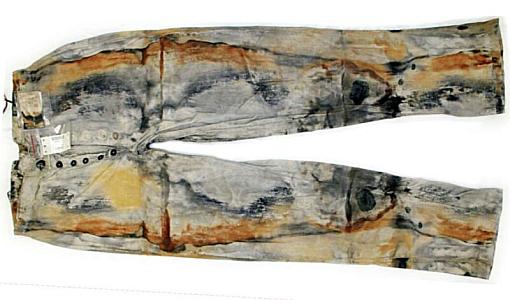
Photo: Holabird Western Americana Collections
On September 12, 1857, the 289-foot-long sidewheel steamer SS Central America sank in a hurricane off the US East Coast. When she sank, 425 of her 578 passengers and crew were drowned and 30,000 pounds (13,600 kg) of gold from the California gold rush was lost. The loss of so much gold contributed directly to the Panic of 1857.
In 1988, the wreck was located and an estimated $100-159 million dollars worth of gold was recovered. The rights to the find have since become the subject of a decades-long legal battle.
Earlier this month, the Holabird Western Americana Collections showcased at auction 270 items recovered from the ship. Included in the auction was a pair of work pants that sold for $114,000.
We are two years late in posting this. Nevertheless, it seems like a worthwhile bit of silliness for a Friday afternoon. Back in 2020, a deadly virus was running rampant across the globe. Performance venues and even rehearsals were shut down. But – the members of the shanty and sea song-singing group Bounding Main knew that “Life … finds a way.” Here is their pandemic T-Rex quintet singing the shanty “Strike the Bell.”
 Last March, we posted about the grounding of the container ship Ever Forward near Baltimore in the Chesapeake Bay. The ship failed to make a turn in the Craighill channel and ran hard aground on a mud flat, where it remained stuck for more than 35 days. At the time, we noted that it was unclear whether human error or a mechanical failure caused the casualty. The Ever Forward had a pilot aboard at the time of the grounding.
Last March, we posted about the grounding of the container ship Ever Forward near Baltimore in the Chesapeake Bay. The ship failed to make a turn in the Craighill channel and ran hard aground on a mud flat, where it remained stuck for more than 35 days. At the time, we noted that it was unclear whether human error or a mechanical failure caused the casualty. The Ever Forward had a pilot aboard at the time of the grounding.
The Coast Guard has now answered that question. Their accident investigation report “determined the incident’s causal factors to be the pilot’s failure to maintain situational awareness and attention while navigating, and inadequate bridge resource management.” They found that the accident was due to the pilot’s inattention while on his cell phone including sending texts, making a series of phone calls, and drafting an email while the ship was underway.
An interrupted broadcast of a football game, a newsbreak during a performance by the New York Philharmonic, a weather report followed by an announcement from President Roosevelt that Japan had bombed Pearl Harbor. Reports of attacks on the Philippines. Here is a compilation of news reports from Sunday, December 7th, 1941, eighty-one years ago today.
 One hundred and five years ago today, on the morning of December 6, 1917, the French freighter SS Mont-Blanc and the SS Imo, a Norwegian ship chartered to carry relief supplies to Belgium, collided in the Narrows, a strait connecting the upper Halifax Harbour to Bedford Basin. The collision at first seemed minor, the two ships hitting at only about a knot.
One hundred and five years ago today, on the morning of December 6, 1917, the French freighter SS Mont-Blanc and the SS Imo, a Norwegian ship chartered to carry relief supplies to Belgium, collided in the Narrows, a strait connecting the upper Halifax Harbour to Bedford Basin. The collision at first seemed minor, the two ships hitting at only about a knot.
Nevertheless, a fire broke out aboard the Mont-Blanc, which was loaded with munitions and high explosives. The fire burned out of control and ignited the cargo, causing the largest man-made explosion the world had ever seen prior to the nuclear age. Roughly 2,000 died and 9,000 were injured. Many thousands more were made homeless. Large sections of Halifax, Nova Scotia were leveled. A tsunami created by the blast wiped out the community of Mi’kmaq First Nations people who had lived in Tuft’s Cove, on the harbor’s eastern shore.
Relief efforts began almost immediately from Eastern Canada and the United States but were impeded by a blizzard. Boston authorities heard of the disaster by telegraph and sent a relief train around 10 pm. The blizzard delayed the train, which finally arrived in the early morning of December 8, and immediately began distributing food, water, and medical supplies. The train from Boston carried some of the first responders to the disaster.
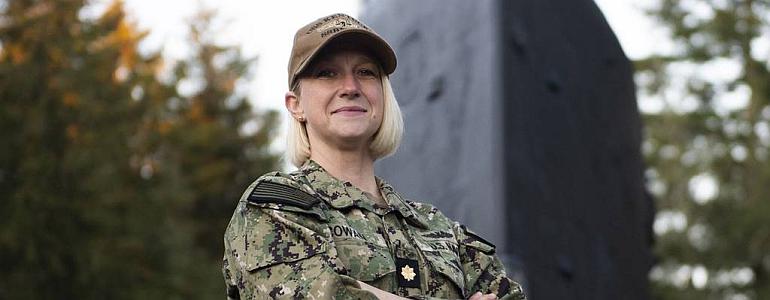 A decade after women were allowed to serve in the US Navy’s Silent Service, Lt. Cmdr. Amber Cowan has become the first woman to serve as executive officer on a submarine.
A decade after women were allowed to serve in the US Navy’s Silent Service, Lt. Cmdr. Amber Cowan has become the first woman to serve as executive officer on a submarine.
Lt. Cmdr. Cowan, who joined the Navy in 2010, reported for duty to the ballistic missile submarine USS Kentucky, based out of Naval Base Kitsap-Bangor, Washington, as its executive officer Nov. 12, as reported by Navy Times.
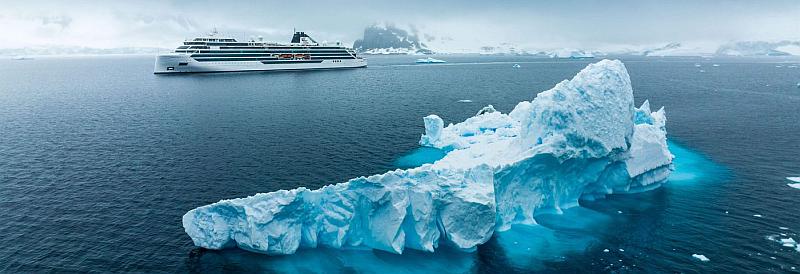 Viking Cruises announced that their expedition cruise ship Viking Polaris was struck by a “rogue wave” in a storm off Antarctica on November 29 at 22:40 local time. The ship was sailing towards Ushuaia, Argentina. One passenger was killed by the wave, while four others sustained non-life-threatening injuries and were treated by the ship’s onboard doctor and medical staff.
Viking Cruises announced that their expedition cruise ship Viking Polaris was struck by a “rogue wave” in a storm off Antarctica on November 29 at 22:40 local time. The ship was sailing towards Ushuaia, Argentina. One passenger was killed by the wave, while four others sustained non-life-threatening injuries and were treated by the ship’s onboard doctor and medical staff.
The ship sustained limited damage during the incident and arrived in port in Ushuaia on the afternoon of November 30. AFP reports that several windows were smashed on one side of the ship. Viking has canceled the ship’s next scheduled departure of December 5-17.
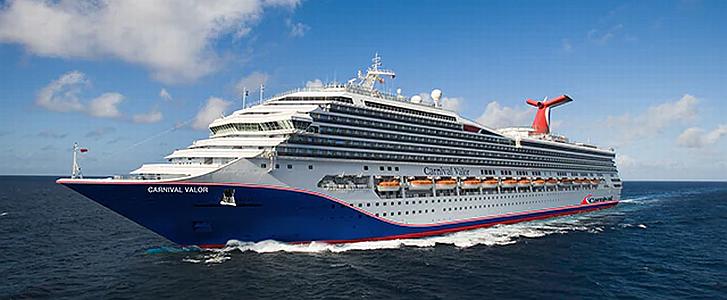 When we posted about a man who had been rescued in the Gulf of Mexico by the US Coast Guard after apparently falling off the cruise ship Carnival Valor, we were convinced that there was more to the story. It didn’t seem likely that anyone could have survived the fall from the ship and then treaded water for around 20 hours in 65- to 70-degree water, withstanding rain, 20-knot winds, and three- to five-foot waves.
When we posted about a man who had been rescued in the Gulf of Mexico by the US Coast Guard after apparently falling off the cruise ship Carnival Valor, we were convinced that there was more to the story. It didn’t seem likely that anyone could have survived the fall from the ship and then treaded water for around 20 hours in 65- to 70-degree water, withstanding rain, 20-knot winds, and three- to five-foot waves.
There had to be more to the story. It now looks like we were wrong. James Michael Grimes, 28, the man rescued was interviewed by ABC News and confirmed the account that he and his sister were drinking at a shipboard bar. At around 11 PM he left to find a restroom and did not return.
Grimes says that all he remembers is waking up in the water, with no memory of how he got there. Grimes said he believes the fall overboard knocked him unconscious. “The next thing I know… I regained consciousness. I was in the water with no boat in sight,” he said. Continue reading
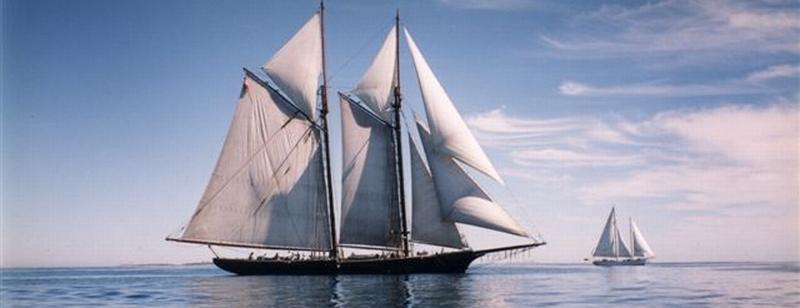
Photo: Susan S. Bank
After seven years of reconstruction and restoration in Boothbay Harbor, ME, the historic schooner Ernestina-Morrissey returned to her home port in New Bedford, MA earlier this week.
“It’s been a long time since we’ve seen the Ernestina-Morrissey sailing into New Bedford to her home port, so this is wonderful,” state Rep. Antonio Cabral said as the boat pulled into the harbor Tuesday.
The schooner was built in 1894 as the Effie M. Morrissey at the James and Tarr Shipyard for the Gloucester fishing fleet.
 When the 51,000 DWT Maltese-flagged tanker Alithina II sailed in ballast from Nigeria to Las Palmas, Gran Canaria she carried a most unusual cargo. Because she sailed in ballast and was riding high in the water, three stowaways were found sitting on top of the ship’s rudder by the Spanish Coast Guard. The three men had survived the 11-day voyage of more than 2,700 nautical miles sitting on the rudder with their feet less than a meter above the water.
When the 51,000 DWT Maltese-flagged tanker Alithina II sailed in ballast from Nigeria to Las Palmas, Gran Canaria she carried a most unusual cargo. Because she sailed in ballast and was riding high in the water, three stowaways were found sitting on top of the ship’s rudder by the Spanish Coast Guard. The three men had survived the 11-day voyage of more than 2,700 nautical miles sitting on the rudder with their feet less than a meter above the water.
The men were taken to a hospital in Gran Canaria and treated for moderate dehydration.
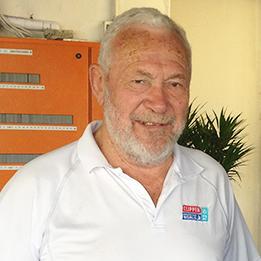
Robin Knox-Johnston in 2013
More news of orcas attacking sailboats in the Atlantic off the Iberian peninsula, in this case involving a sailing icon. Scuttlebutt Sailing News reports that a pod of orcas attacked Sir Robin Knox-Johnson while sailing his Farr 56 Sanjula, damaging the steering.
As the first person to perform a single-handed non-stop circumnavigation of the globe, and then later won the second Jules Verne Trophy, 83-year-old Robin Knox-Johnson is indeed sailing royalty.
Knox-Johnson recounted what happened to Scuttlebutt: On November 24 at 0835 GMT off the Spanish coast of Cape Finisterre (Lat 42 53.6N Long 009 30.3W), a pod of 7-10 Orcas surrounded my Farr 56 Sanjula and then began to barge into its rudder. This eventually broke a steering connecting rod.
Here is a well-done short video about the schooner Wyoming, one of the largest wooden ships ever built. Built as a collier in 1909 by Percy & Small in Bath, Maine, she was capable of carrying 6000 long tons of coal and had an economically successful fifteen-year career before foundering in a storm off Nantucket in 1924, with the loss of all hands.
The Wreck of the Schooner “WYOMING”, the Largest Wooden Ship in History
 Yesterday, the US Coast Guard rescued an unidentified passenger who had gone overboard in the Gulf of Mexico from the cruise ship Carnival Valor on a voyage from New Orleans to Cozumel. While most cases of passengers who fall or jump overboard from cruise ships end in tragedy, one Coast Guard officer referred to this rescue as a “Thanksgiving miracle.” Until more facts emerge, it certainly qualifies as a Thanksgiving mystery.
Yesterday, the US Coast Guard rescued an unidentified passenger who had gone overboard in the Gulf of Mexico from the cruise ship Carnival Valor on a voyage from New Orleans to Cozumel. While most cases of passengers who fall or jump overboard from cruise ships end in tragedy, one Coast Guard officer referred to this rescue as a “Thanksgiving miracle.” Until more facts emerge, it certainly qualifies as a Thanksgiving mystery.
Shortly after the Carnival Valor sailed from New Orleans on Thanksgiving eve, a man and his sister were drinking at a shipboard bar. At around 11 PM the man left to find a restroom and did not return.
The next day, his sister could not find him and notified cruise ship personnel that he was missing at around noon. After searching the ship, the US Coast Guard was notified that there was a man overboard at 2:30 PM. The ship reversed course to retrace its route.
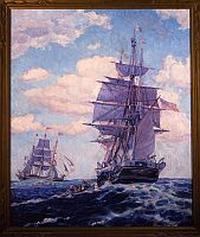 Happy Thanksgiving to those on this side of the pond and below the 49th parallel. (The Canadians celebrated the holiday in October.)
Happy Thanksgiving to those on this side of the pond and below the 49th parallel. (The Canadians celebrated the holiday in October.)
What do whaling ships, a child’s nursery rhyme, a female magazine editor, and Abraham Lincoln have to do with Thanksgiving? An updated repost.
Until the Civil War, Thanksgiving was a sporadically celebrated regional holiday. Today, Thanksgiving is one of the central creation myths of the founding of the United States, although not universally admired. The story is based on an account of a one-time feast of thanksgiving in the Plymouth colony of Massachusetts during a period of atypically good relations with local tribes.
The actual history of what happened in 1621 bears little resemblance to what most Americans are taught in grade school, historians say. There was likely no turkey served. There were no feathered headdresses worn. And, initially, there was no effort by the Pilgrims to invite the local Native American tribe to the feast they’d made possible.
Thanksgiving only became a national holiday in 1863. Before the celebration spread across the country, Thanksgiving was most popular in New England. On 19th-century American whaling ships, which sailed from New England ports, they celebrated only the Fourth of July, Thanksgiving, and Christmas. Of the three holidays, Thanksgiving may have been the most popular. On Norfolk Island in the Pacific, they also celebrate Thanksgiving, the holiday brought to the island by visiting American whaling ships.
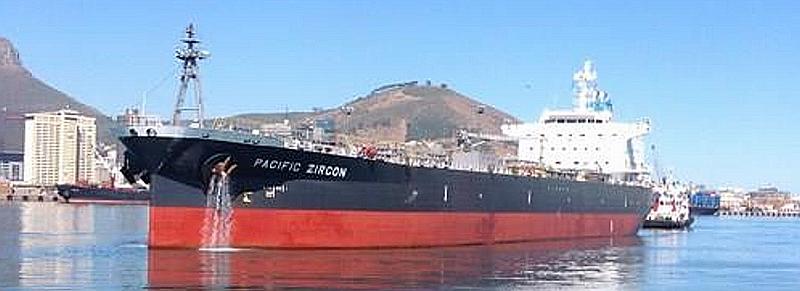 Last week, we posted about the drone attack on the 50,000 DWT product tanker Pacific Zircon, off the coast of Oman. Investigators sent aboard to assess the damage and to collect debris from the drone determined that the tanker was struck by an Iranian Shahed-136 drone, the same kind of bomb-carrying drone Iran has supplied to Russia in its war on Ukraine. Iranian drones were used by Yemeni rebels to attack Saudi Arabia and the United Arab Emirates earlier this year, the Navy said.
Last week, we posted about the drone attack on the 50,000 DWT product tanker Pacific Zircon, off the coast of Oman. Investigators sent aboard to assess the damage and to collect debris from the drone determined that the tanker was struck by an Iranian Shahed-136 drone, the same kind of bomb-carrying drone Iran has supplied to Russia in its war on Ukraine. Iranian drones were used by Yemeni rebels to attack Saudi Arabia and the United Arab Emirates earlier this year, the Navy said.
A Navy statement concluded that on Nov. 15, the explosive-laden aerial drone attacked Pacific Zircon at approximately 7:30 p.m. in the Northern Arabian Sea, tearing a 30-inch-wide hole into the back of the ship while subsequently penetrating and damaging internal compartments. The UAV’s explosive impact also damaged a shipboard boiler, potable water tank and life raft.
 LightSail 2, the Planetary Society‘s solar sailing spacecraft, is no more. On November 17th, the crowdfunded solar sailing spacecraft burned in a blaze of glory as it re-entered earth’s atmosphere after traveling 8 million kilometers (5 million miles) powered only by sunlight.
LightSail 2, the Planetary Society‘s solar sailing spacecraft, is no more. On November 17th, the crowdfunded solar sailing spacecraft burned in a blaze of glory as it re-entered earth’s atmosphere after traveling 8 million kilometers (5 million miles) powered only by sunlight.
“LightSail 2 is gone after more than three glorious years in the sky, blazing a trail of lift with light, and proving that we could defy gravity by tacking a sail in space,” said Bill Nye, CEO of The Planetary Society in a statement. “The mission was funded by tens of thousands of Planetary Society members, who want to advance space technology.”
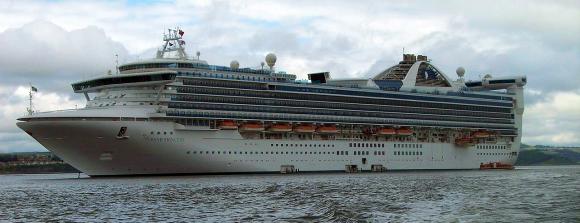 In the words of Yogi Berra, “It’s like deja vu all over again.” Masks and vaccination mandates are returning to the cruise industry, at least for many cruise ships calling in Australia.
In the words of Yogi Berra, “It’s like deja vu all over again.” Masks and vaccination mandates are returning to the cruise industry, at least for many cruise ships calling in Australia.
In March of 2020 at the beginning of the pandemic, 700 passengers and crew on the Diamond Princess became infected with the Covid-19 virus. The virus also spread across other cruise ships, ultimately resulting in the total shutdown of the worldwide shutdown of the cruise industry.
Since then with the advent of safety protocols including masking, testing and vaccinations, the cruise industry has restarted, benefitting from the pent-up demand. But the pandemic is not quite over. Two weeks ago, the Majestic Princess arrived in Sydney, Australia with 800 passengers who tested positive for Covid-19.
